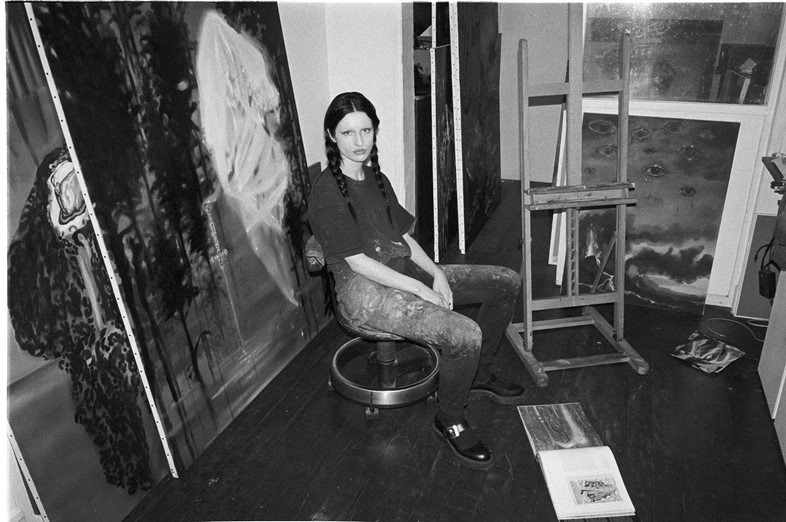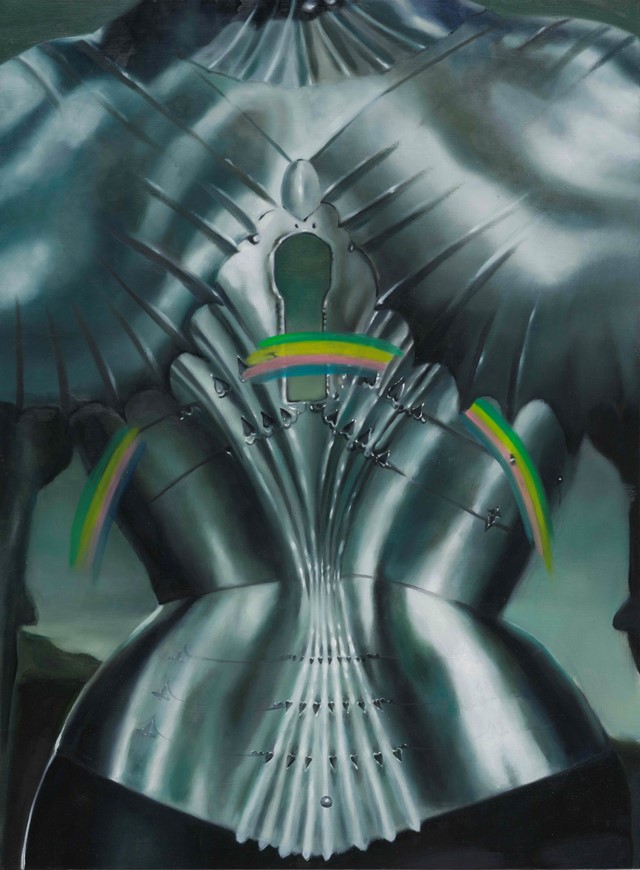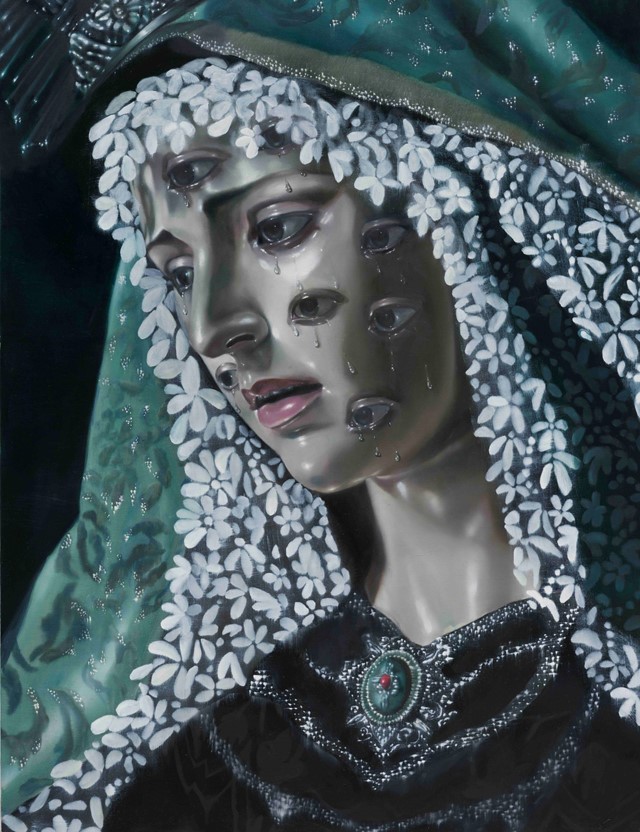As her new exhibition Tremors opens in Los Angeles, Tali Lennox talks about her surreal, apocalyptic works, and how her paintings draw from her lived experience as a woman
Los Angeles, a city haunted by ghosts forever stuck in the pursuit of fame, is a fitting backdrop for Tali Lennox’s new solo exhibition, Tremors, at Nicodim Gallery. For within the phantasmic realms of her oil paintings, rendered eternal by their wonderous mythology drawn from throughout history, there too is a reflection on endless cycles of humanity. If the onomatopoeic ‘tremor’ can refer to today’s universal unease and fear in response to natural catastrophe, Lennox broadens the scope to consider “what it means more widely in the cycles of the universe and the world. Throughout history, civilisations have fallen. So, there is beauty to be found in surrendering while maintaining humility in the face of it all,” she says.
Painting for Lennox is a “bloodline, the veins which have carried [her] throughout life” since childhood. Entirely self-taught, her elaborate creative realm is a place of safety, the bedrock of her personal mantra to “always return to your internal world”. As she was thrown into the moneyed maze of the commercial art world while living in New York in her early twenties, it was this safe inner realm which allowed her to “silence the outside voices in order to stay strong to instinct”. “I think without [an art education] it just takes extra dedication to learn your craft and to maintain humility,” she reflects. “I always strive to evolve, and to not sit comfortably.”
Lennox’s ability to find fortitude and solace within even the rockiest of circumstances is what makes her work so potent. If the fantastical world of her paintings is cleaved by duality – fragility versus dominance, pleasure versus pain, life versus death – her soft, glistening application of oil paints opens space for beauty, for wonderment between these binaries of human experience. “I don’t use the word cracking or eruption, but I paint a lot of volcanoes,” she explains of the molten backgrounds which feature in several of her recent works. “It’s this void, this in-between state that we have as humans. We don’t exist in them, but we all have these moments of unspeakable openings.” They are tremors – moments where sensation overpowers the mind.

The seeds of her latest exhibition were planted when Lennox discovered a copy of the 16th-century German illuminated manuscript, Das Wunderzeichenbuch (The Book of Miracles), in a pokey second-hand bookstore where her boyfriend, the artist George Rouy, lives in England. The surreal apocalyptic imagery, mixing folklore and religion, spoke to her desire to maintain a sense of mystery in her work: “I never want to portray a painting as the answer, as the absolute.” From her own complex personal mythology – which weaves tales of Aphrodite, the Anatomical Venus, and Medieval legends, amongst many other curiosities – she creates strangely beautiful utopian dystopias (or perhaps dystopian utopias): eyes crying blood, perfectly gutted bodies, oyster-headed figures. “I’m always saying ‘just respect the mystery’,” Lennox says. “There’s respect to the unknowing and perhaps we should rejoice in that as well.”
If one of the fonts of wisdom (and mystery) that she consistently dips into is feminine energy, Lennox says she is simply painting from her lived experience as a woman. Before pursuing painting full-time, she had a successful career as a model (and still dabbles today – she recently shot a campaign for Vivienne Westwood). “It was a wonderful adventure and experience,” she reflects, “but if anything, it taught me that my personal values are in creating and making an image, and not being valued for my own.” Perhaps this explains the full-bodied emotionality of her female characters, who enchant and entrance with their oystered body parts – symbols of sexual alchemy and fossils of life cycles, which necessarily begin with women. “There’s a metamorphosis in these women’s figures turning into oysters and shells,” she explains of the motif. “It’s surrendering to a bigger notion of the world, to allow the body’s eventual return to nature.”

So, what if tremors are not simply disruptive and destructive, but also climatic, cathartic, a catalyst for change? “Painting, for me, is always like returning to a childlike wonderment. I don’t really want to make work that makes people feel terrible or afraid,” Lennox muses as she reflects on the title of her show. “But it’s fun to encourage someone to gently crack open their sense of reality.”
Tremors by Tali Lennox is on show at Nicodim Gallery in Los Angeles until 7 April 2024.






